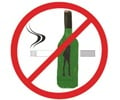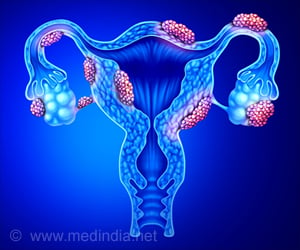It's not just men who are addicted to alcohol, for a new study has found substantial increases in drinking and alcohol dependence among women.
It's not just men who are addicted to alcohol, for a new study has found substantial increases in drinking and alcohol dependence among women.
The cross-sectional studies have reported significant increase in drinking and alcohol dependence among women, particularly among white and Hispanic women, beginning with those born in the United States after World War II."By looking at two different cross-sectional surveys that asked the same questions in the same manner, but were conducted 10 years apart, we were able to compare, for example, 30 - 40 year olds in 2001 with 30 - 40 year olds in 1991," said Richard A. Grucza, an epidemiologist at Washington University School of Medicine and the study's corresponding author.
"Essentially, this allowed us to correct for the effects of age on reporting. When we did this, we found that the tendency for young people to have higher levels of lifetime alcohol dependence clearly remained for women, although it disappeared for men," he added.
For the study, researchers assessed two large, national surveys, the National Longitudinal Alcohol Epidemiologic Survey (NLAES), in 1991 and 1992 and the National Epidemiological Survey on Alcohol and Related Conditions (NESARC) in 2001 and 2002.
They compared lifetime prevalence rates from the same age groups and demographics, while simultaneously controlling for age-related factors.
"We found that for women born after World War II, there are lower levels of abstaining from alcohol, and higher levels of alcohol dependence, even when looking only at women who drank," said Grucza.
Advertisement
"This is an excellent study that adds important information to the accumulating evidence that the gender gap between women and men in the prevalence of alcohol dependence is narrowing," said Shelly F. Greenfield, associate clinical director of the Alcohol and Drug Abuse Treatment Program at McLean Hospital.
Advertisement
Grucza drew an analogy between women's drinking habits and culture and immigration.
"Clearly there were many changes in the cultural environment for women born in the 40s, 50s and 60s compared to women born earlier," he said.
"Women entered the work force, were more likely to go to college, were less hampered by gender stereotypes, and had more purchasing power. They were freer to engage in a range of behaviors that were culturally or practically off-limits, and these behaviors probably would have included excessive drinking and alcohol problems.
"We can think of U.S. culture as having been traditionally dominated by white men.
"As women have 'immigrated' into this culture, they have become 'acculturated' with regard to alcohol use. But Black women - who still have the lowest rates of drinking among the demographic groups we looked at - have a second barrier between them and the dominant U.S. culture, namely, their race, that may be keeping them from adopting the standards of the dominant culture with respect to alcohol use," he added.
Greenfield suggested that specially designed prevention programs that target female drinkers might help to lower drinking rates, and also delay the age of drinking initiation, which could help prevent later alcohol problems.
The results appear in May issue of Alcoholism: Clinical and Experimental Research.
Source-ANI
SPH/M











